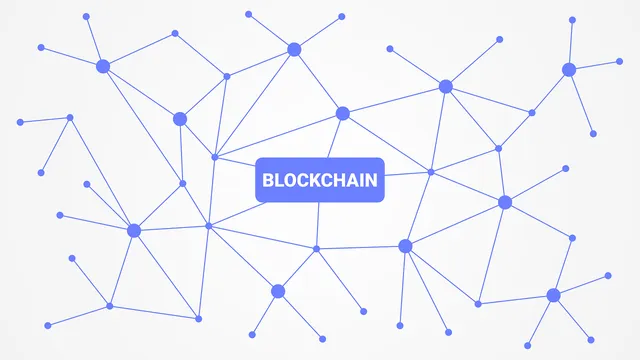S4B Crypto Contest - Season 4

Hello Everyone,
I hope you guys are doing well. My name is Zubair Ahmad and I am from Pakistan. I hope you enjoy my post and support me.
I would like to thanks to @waqarahmadshah for organization this contest.
I likely to invite to invite
@fantvwiki
@robin42
@memamun
to participate in this beautiful contest.
What is a blockchain and how does it work? |
|---|

A blockchain is a decentralized digital ledger that have records a transactions and data across a network of computers.
Blockchain consist of two words 'block' and 'chain'
1. Block.
A block is a collection of the transactions or data that are recoded and verified on the blockchain.
2. Chain.
The blocks that recoded the transactions and data are linked together in a chain which we called the name 'blockchain'.
How Block Chain Work.
I will try to explain in point which is help full for everyone to understand easily that how this block chain work actually.
1. Transaction.
Fist step of block chain is When a new transaction is made, it is broadcast to the network of nodes.
2. Verification.
Nodes verify this new transaction using complex algorithms and cryptography.
3. Block creation.
Third step of block chain is yo created a new block and added to the blockchain which contain multiple transactions.
4. Chaining.
This multiple new blocks create a linked to the previous block through a unique code (hash).
5. Network agreement.
Nodes agree on the state of this blockchain, ensuring that everyone has the same version.
6. Security.
At the end the blockchain is secured through cryptography, making it difficult to alter or manipulate.
What is a consensus mechanism and why is it important in a blockchain? |
|---|
Consensus mechanisms in blockchain have a fundamental rules or protocols designed to achieve agreement among network participants on the state of a distributed ledger.
There are several types of consensus mechanisms, Each consensus have their own advantages and disadvantages, such as security, scalability, energy efficiency, and level of decentralization. Some of the most common consensus mechanisms are.
1. Proof of Work (PoW).
Proof of work are involves miners competing to solve complex mathematical problems in order to validate the transactions and add this blocks to the blockchain.
2. Proof of Stake (PoS).
Proof of stake have a participants validate transactions and to create a new blocks based on the amount of cryptocurrency they have.
3. Delegated Proof of Stake (DPoS).
Delegated proof of stake have a smaller group of “delegates” which are elected by token holders to validate transactions and produce a new blocks.
4.Proof of Authority (PoA).
Proof of Authority have a centralized group of pre-selected validators and are responsible for validating transactions and maintaining the integrity of the blockchain.
5. Proof of History (PoH).
Proof of History are focuses on the order and time-stamping of transactions, using a verifiable delay function to establish a reliable timeline for the transactions.
Explain the difference between proof-of-work and proof-of-stake consensus mechanisms. |
|---|
Here are the main difference between proof of work and proof of stake consensus mechanisms.
1. Validation Method.
PoW.
Pow validators solve complex mathematical puzzles to validate transactions and create new blocks.
PoS.
PoS validators stake their own cryptocurrency to validate transactions and create new blocks.
2. Energy Consumption.
Pow.
High energy consumption due to high and intense computational requirements.
Pos.
Low energy consumption, as no intense computations are required.
3. Barrier to Entry.
Pow.
High barrier to entry, as a significant computational power and energy are required.
Pos.
Lower barrier to entry, as only a significant amount of a cryptocurrency is required.
4. Security.
Pow.
In pow Security is based on the energy expenditure of miners.
Pos.
In pos Security is based on the economic stake of validators.
5. Scalability.
Pow.
pow have a limited scalability due to energy consumption and computational requirements.
Pos.
Pos have a Higher scalability, as validation is based on economic stake rather than the energy expenditure and no computational requirements.
X promotion.
https://x.com/Zubaira68527881/status/1782302287605768311